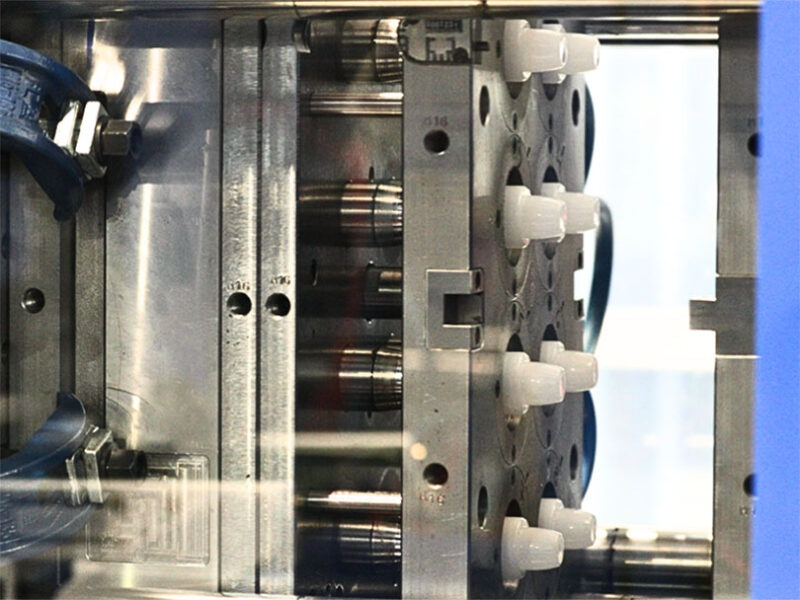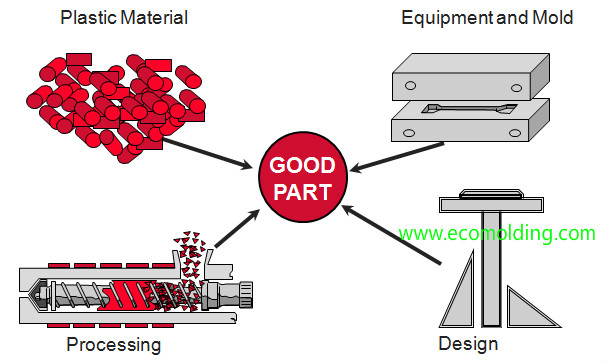Comprehending the Plastic Injection Molding Process for High-Quality Manufacturing
Wiki Article
The Future of Plastic Shot Molding: Trends and Advancements to Enjoy
As the plastic injection molding industry advances, a number of crucial trends are emerging that assurance to improve its landscape. Automation and wise production methods are set to enhance performance, while the change towards lasting products reflects an expanding ecological awareness.Automation and Smart Manufacturing
As the plastic shot molding market develops, automation and smart production are taking spotlight, revolutionizing manufacturing procedures - Plastic Injection Molding. The integration of innovative innovations such as robotics, IoT (Internet of Points), and expert system is making it possible for producers to boost performance, decrease functional expenses, and boost product top quality. Automated systems enhance workflows, lessening hand-operated intervention and boosting throughput, which is crucial in fulfilling the rising need for rapid manufacturing cyclesSmart manufacturing modern technologies assist in real-time monitoring and information evaluation, enabling firms to optimize device performance and predict upkeep needs. This positive strategy not only lessens downtime but likewise expands the lifespan of tools. Moreover, using collective robotics, or cobots, enhances the versatility of manufacturing lines, allowing makers and employees to run side by side safely and successfully.
The adoption of automation in plastic injection molding is not simply a pattern yet a strategic necessary for businesses aiming to remain competitive in an international market. By harnessing these technologies, producers can accomplish higher precision, minimize waste, and adapt quickly to altering client demands, positioning themselves for sustainable growth in an increasingly automated future.
Sustainable Materials and Practices
The push in the direction of automation and clever production has actually led the way for a better focus on sustainable materials and practices within the plastic shot molding sector. Firms are significantly looking for green choices to typical petroleum-based plastics, causing the adoption of bio-based and recycled materials. These sustainable materials not only reduce ecological effect however also straighten with customer demand for greener items.
Furthermore, collaboration between producers, product vendors, and ecological companies is cultivating innovation in the development of sustainable materials that meet performance standards without compromising quality. As regulations around plastic usage become stricter, the industry is positioned to adjust by welcoming these sustainable techniques, making sure long-lasting feasibility and minimizing reliance on non-renewable sources. The assimilation of sustainability into plastic shot molding is not merely a trend; it is becoming an important component of corporate responsibility and operational quality.
Breakthroughs in 3D Printing
Current improvements in 3D printing innovation are significantly changing the landscape of plastic shot molding. When challenging or difficult to achieve via conventional methods, the assimilation of additive manufacturing processes permits for the fast prototyping of complex geometries that were. This capacity not only increases product growth cycles however also minimizes product waste, straightening with the growing need for lasting manufacturing techniquesFurthermore, the appearance of hybrid production techniques, which incorporate 3D printing and injection molding, supplies producers the capacity to create complex designs while preserving the performance of automation. This strategy enables the production of tailored parts tailored to certain consumer requirements without giving up the rate and scalability that injection molding supplies.
In addition, developments in materials, such as high-performance polymers and compounds especially designed for 3D printing, are improving the useful capabilities of printed elements. These products can hold up against greater anxiety and exhibit enhanced thermal properties, making them appropriate for even more requiring applications.
As 3D printing proceeds to advance, its integration into plastic injection molding processes assures to enhance efficiency, minimize expenses, and foster technology in item layout, placing manufacturers to better meet the challenges of an open my explanation market.
Information Analytics and IoT Assimilation
Information analytics and the assimilation of the Net of Points (IoT) are changing plastic shot molding by giving manufacturers with unprecedented understandings right into their procedures. By leveraging real-time data gathered from interconnected devices and sensors, producers can keep track of performance metrics, identify inefficiencies, and maximize manufacturing processes. This data-driven approach facilitates anticipating upkeep, minimizing downtime and prolonging devices lifespan.Furthermore, IoT assimilation permits for improved top quality control. By continually tracking variables such as pressure, temperature, and cycle times, manufacturers can promptly detect discrepancies from established specifications and make modifications in real time. This not just enhances product uniformity but additionally minimizes waste and scrap rates.
The blend of data analytics and IoT technologies likewise empowers suppliers to embrace more nimble manufacturing methods. With access to detailed data analytics, companies can reply to market demands with better versatility, adjusting manufacturing routines and arrangements as needed. This flexibility is important in a swiftly changing production landscape.

Personalization and Design Adaptability
How can customization and design flexibility enhance the competitiveness of plastic injection molding? In a progressively diverse market, the ability to offer tailored solutions is extremely important. Modification permits manufacturers to meet specific customer demands, suiting one-of-a-kind measurements, forms, and performances that standard items may not satisfy. This versatility not only fosters customer commitment but additionally opens up opportunities for new business opportunities throughout different industries, from automobile to durable goods.Improvements in design modern technologies, such as computer-aided style (CAD) and rapid prototyping, more reinforce this fad. These tools enable developers to create detailed patterns and complicated geometries, which can be seamlessly incorporated into the manufacturing process. Consequently, suppliers can react swiftly to altering customer preferences and market needs.
Furthermore, here are the findings the execution of modular tooling systems enhances style flexibility, enabling quicker adjustments between different item styles without comprehensive downtime. This adaptability can bring about decreased preparations and reduced production expenses, making firms much more affordable and dexterous. Ultimately, accepting modification and design versatility in plastic shot molding not just elevates product offerings however additionally strengthens market positioning in an ever-evolving landscape.
Final Thought
The future of plastic shot molding is characterized by significant improvements in automation, lasting techniques, and innovative materials. The combination of IoT and information analytics will certainly boost operational effectiveness and anticipating upkeep. The adoption of recycled and bio-based materials, along with development in 3D printing, will certainly cultivate sustainability within the sector. Modification via modular tooling and rapid prototyping will make it possible for producers to remain responsive and competitive to the dynamic needs of the market.
The future of plastic shot molding is from this source characterized by considerable innovations in automation, sustainable practices, and ingenious products.
Report this wiki page